Abstract
CD4 and CD8 T-cell clones were generated using the Mx9 monoclonal antibody (mAb), which recognizes the V beta 8 T-cell receptor (TcR) gene family. The interaction of these clones with the Mx9 antibody was analysed and all were found to be specifically stimulated to proliferate by plastic-adherent Mx9. In the presence of Mx9 or its F(ab')2 fragment, CD8+ Mx9+ clones were capable of specifically lysing the CD4+ Mx9+ T-cell clones. No lysis was seen of Mx9- T cells, or in the absence of the antibody. Conversely CD4+ Mx9+ T cells did not have lytic function. These results indicate that cross-linking of T cells via their antigen-specific receptors may initiate a unidirectional killing. Unlike previously reported lytic systems involving anti-TcR antibodies (e.g. anti-CD3), these results suggest that this mechanism may have an important physiological role in immune regulation. Anti-idiotypic antibodies have been shown to recognize T-cell receptors. These may exert profound immunosuppressive effects by inducing the lysis of the helper cells or B cells.
Full text
PDF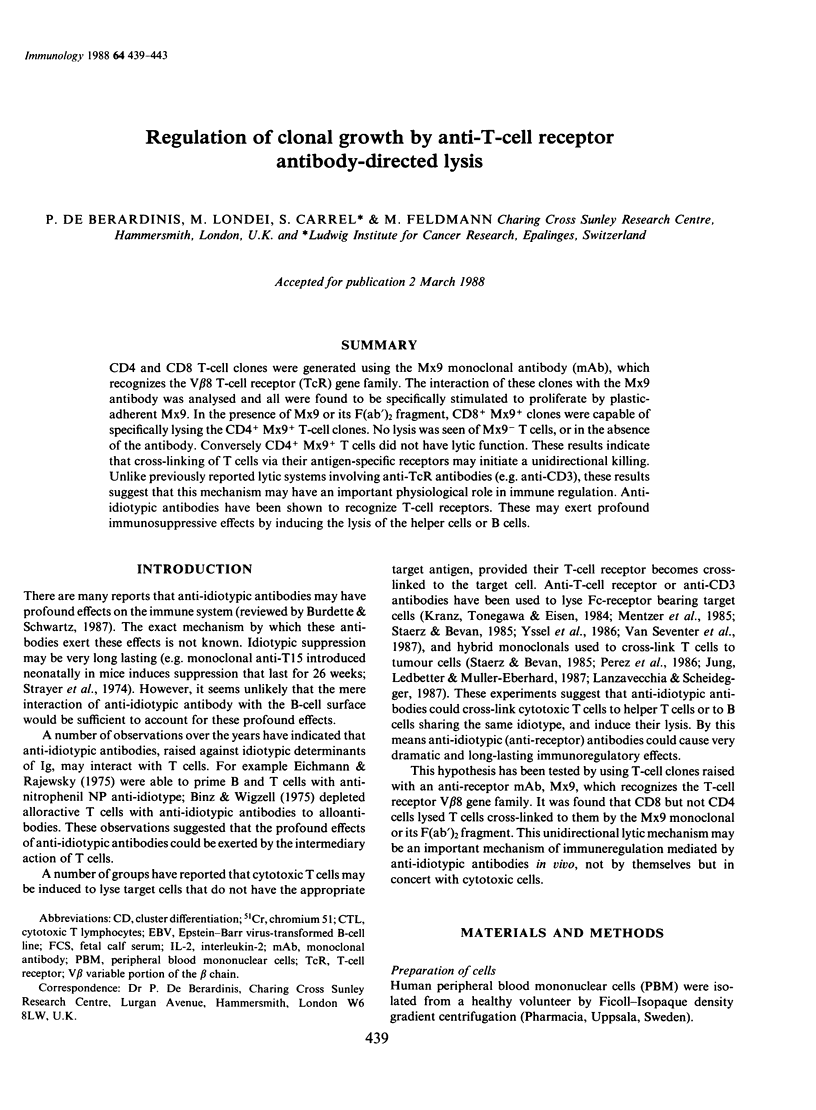
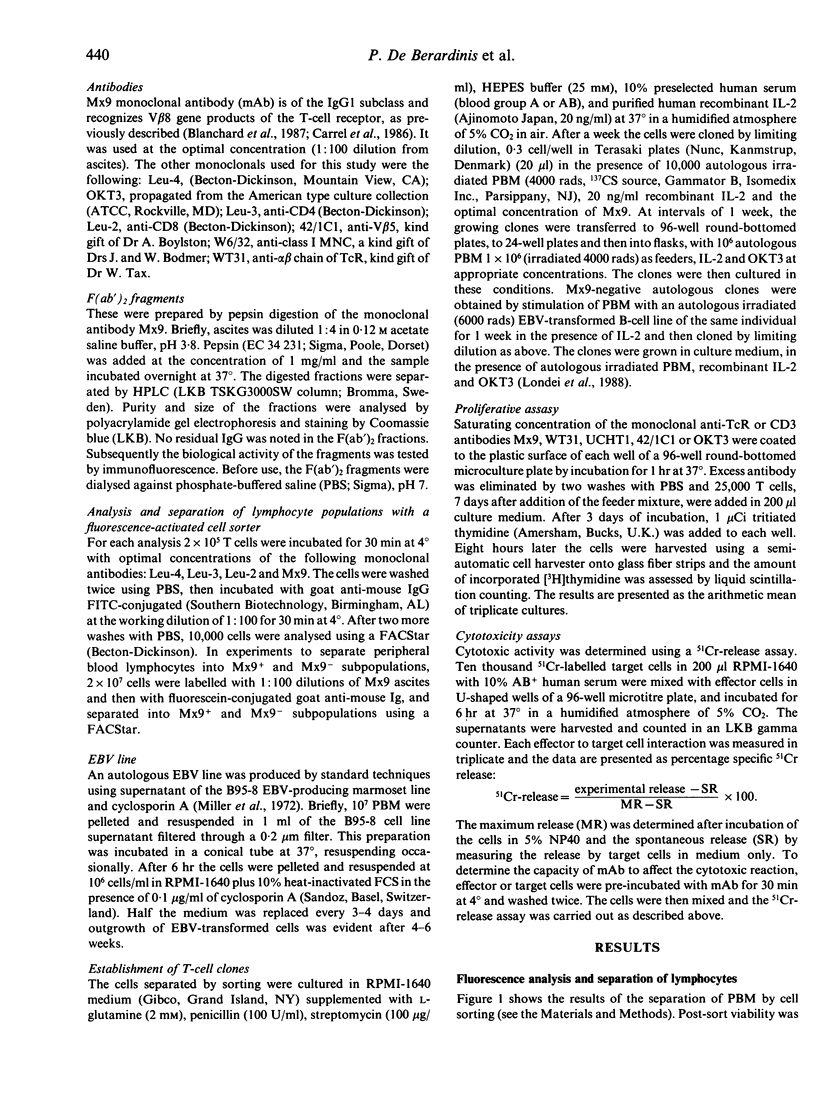
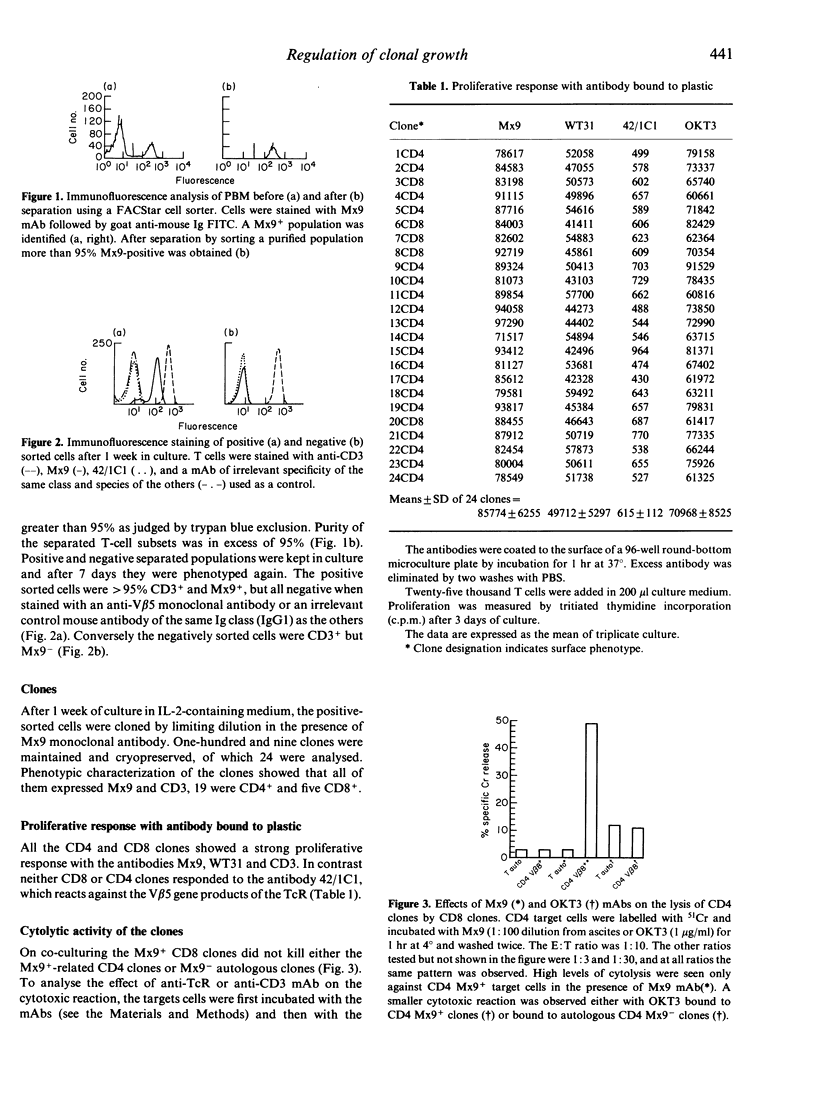
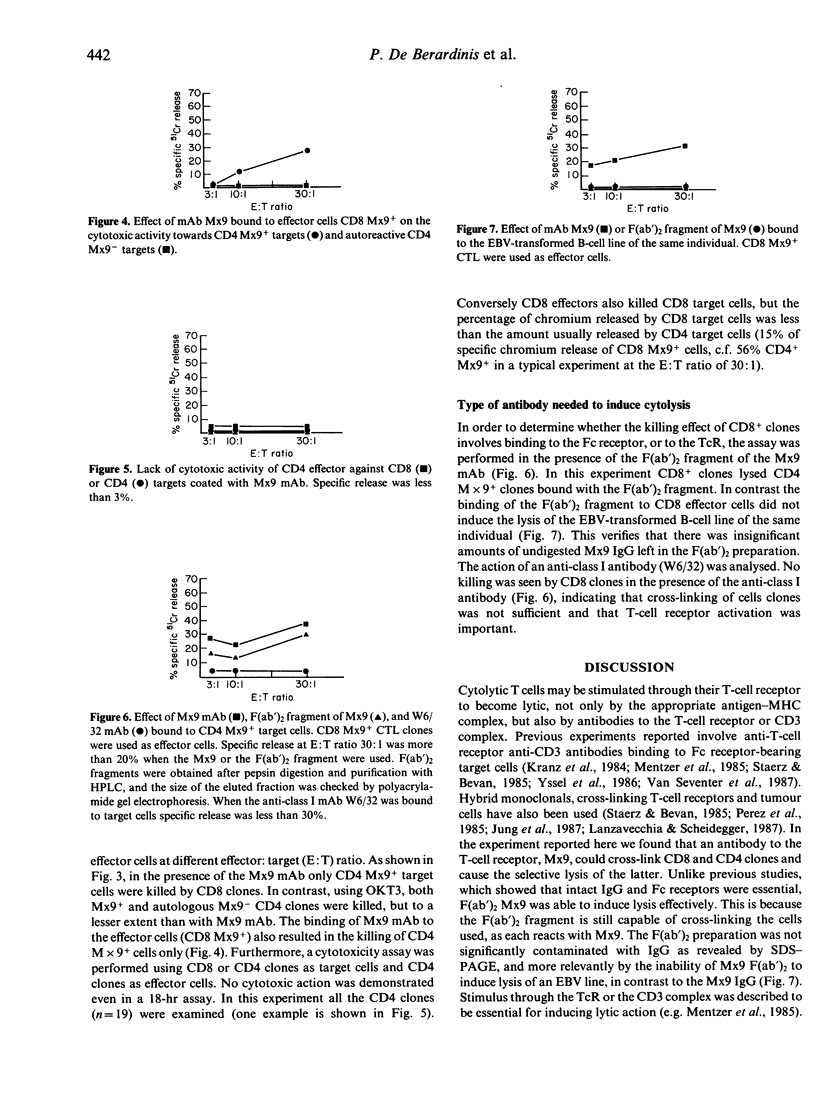
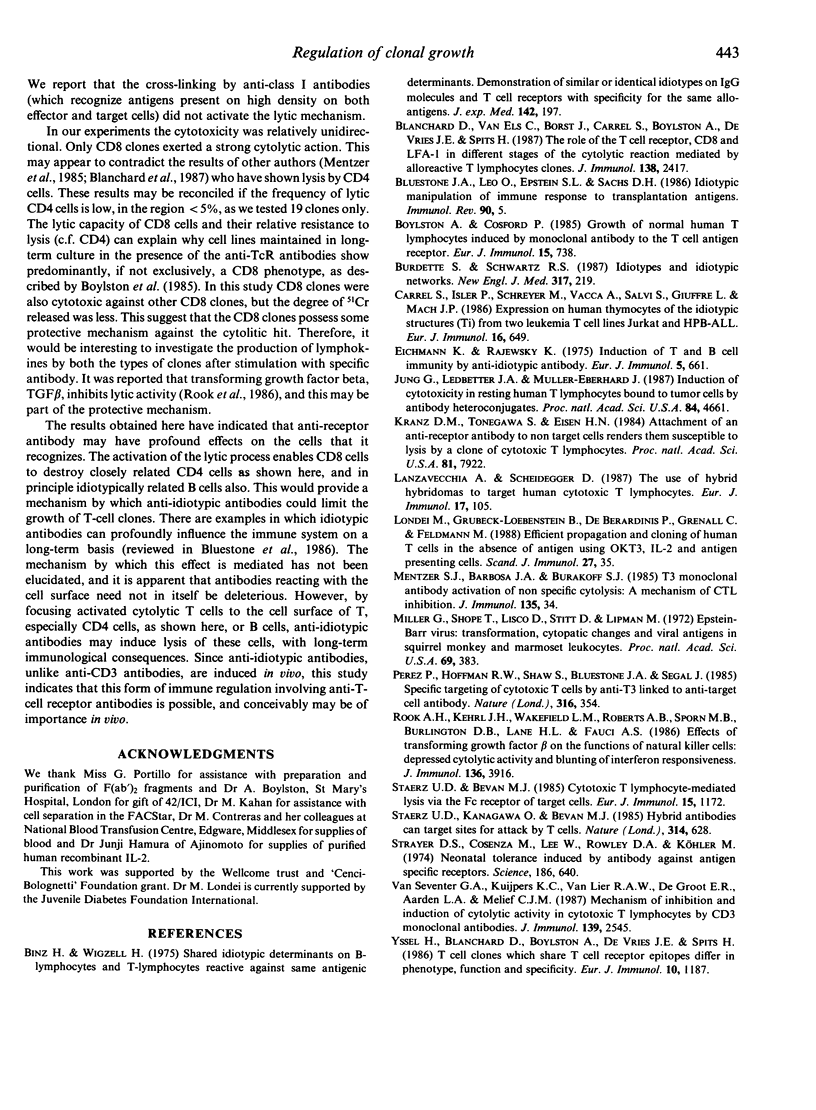
Selected References
These references are in PubMed. This may not be the complete list of references from this article.
- Binz H., Wigzell H. Shared idiotypic determinants on B and T lymphocytes reactive against the same antigenic determinants. I. Demonstration of similar or identical idiotypes on IgG molecules and T-cell receptors with specificity for the same alloantigens. J Exp Med. 1975 Jul 1;142(1):197–211. doi: 10.1084/jem.142.1.197. [DOI] [PMC free article] [PubMed] [Google Scholar]
- Blanchard D., van Els C., Borst J., Carrel S., Boylston A., de Vries J. E., Spits H. The role of the T cell receptor, CD8, and LFA-1 in different stages of the cytolytic reaction mediated by alloreactive T lymphocyte clones. J Immunol. 1987 Apr 15;138(8):2417–2421. [PubMed] [Google Scholar]
- Bluestone J. A., Leo O., Epstein S. L., Sachs D. H. Idiotypic manipulation of the immune response to transplantation antigens. Immunol Rev. 1986 Apr;90:5–27. doi: 10.1111/j.1600-065x.1986.tb01475.x. [DOI] [PubMed] [Google Scholar]
- Boylston A. W., Cosford P. Growth of normal human T lymphocytes induced by monoclonal antibody to the T cell antigen receptor. Eur J Immunol. 1985 Jul;15(7):738–742. doi: 10.1002/eji.1830150719. [DOI] [PubMed] [Google Scholar]
- Burdette S., Schwartz R. S. Current concepts: immunology. Idiotypes and idiotypic networks. N Engl J Med. 1987 Jul 23;317(4):219–224. doi: 10.1056/NEJM198707233170407. [DOI] [PubMed] [Google Scholar]
- Carrel S., Isler P., Schreyer M., Vacca A., Salvi S., Giuffre L., Mach J. P. Expression on human thymocytes of the idiotypic structures (Ti) from two leukemia T cell lines Jurkat and HPB-ALL. Eur J Immunol. 1986 Jun;16(6):649–652. doi: 10.1002/eji.1830160610. [DOI] [PubMed] [Google Scholar]
- Eichmann K., Rajewsky K. Induction of T and B cell immunity by anti-idiotypic antibody. Eur J Immunol. 1975 Oct;5(10):661–666. doi: 10.1002/eji.1830051002. [DOI] [PubMed] [Google Scholar]
- Kranz D. M., Tonegawa S., Eisen H. N. Attachment of an anti-receptor antibody to non-target cells renders them susceptible to lysis by a clone of cytotoxic T lymphocytes. Proc Natl Acad Sci U S A. 1984 Dec;81(24):7922–7926. doi: 10.1073/pnas.81.24.7922. [DOI] [PMC free article] [PubMed] [Google Scholar]
- Lanzavecchia A., Scheidegger D. The use of hybrid hybridomas to target human cytotoxic T lymphocytes. Eur J Immunol. 1987 Jan;17(1):105–111. doi: 10.1002/eji.1830170118. [DOI] [PubMed] [Google Scholar]
- Londei M., Grubeck-Loebenstein B., de Berardinis P., Greenall C., Feldmann M. Efficient propagation and cloning of human T cells in the absence of antigen by means of OKT3, interleukin 2, and antigen-presenting cells. Scand J Immunol. 1988 Jan;27(1):35–46. doi: 10.1111/j.1365-3083.1988.tb02321.x. [DOI] [PubMed] [Google Scholar]
- Mentzer S. J., Barbosa J. A., Burakoff S. J. T3 monoclonal antibody activation of nonspecific cytolysis: a mechanism of CTL inhibition. J Immunol. 1985 Jul;135(1):34–38. [PubMed] [Google Scholar]
- Miller G., Shope T., Lisco H., Stitt D., Lipman M. Epstein-Barr virus: transformation, cytopathic changes, and viral antigens in squirrel monkey and marmoset leukocytes. Proc Natl Acad Sci U S A. 1972 Feb;69(2):383–387. doi: 10.1073/pnas.69.2.383. [DOI] [PMC free article] [PubMed] [Google Scholar]
- Perez P., Hoffman R. W., Shaw S., Bluestone J. A., Segal D. M. Specific targeting of cytotoxic T cells by anti-T3 linked to anti-target cell antibody. Nature. 1985 Jul 25;316(6026):354–356. doi: 10.1038/316354a0. [DOI] [PubMed] [Google Scholar]
- Rook A. H., Kehrl J. H., Wakefield L. M., Roberts A. B., Sporn M. B., Burlington D. B., Lane H. C., Fauci A. S. Effects of transforming growth factor beta on the functions of natural killer cells: depressed cytolytic activity and blunting of interferon responsiveness. J Immunol. 1986 May 15;136(10):3916–3920. [PubMed] [Google Scholar]
- Staerz U. D., Bevan M. J. Cytotoxic T lymphocyte-mediated lysis via the Fc receptor of target cells. Eur J Immunol. 1985 Dec;15(12):1172–1177. doi: 10.1002/eji.1830151206. [DOI] [PubMed] [Google Scholar]
- Staerz U. D., Kanagawa O., Bevan M. J. Hybrid antibodies can target sites for attack by T cells. Nature. 1985 Apr 18;314(6012):628–631. doi: 10.1038/314628a0. [DOI] [PubMed] [Google Scholar]
- Strayer D. S., Cosenza H., Lee W. M., Rowley D. A., Köhler H. Neonatal tolerance induced by antibody against antigen-specific receptor. Science. 1974 Nov 15;186(4164):640–643. doi: 10.1126/science.186.4164.640. [DOI] [PubMed] [Google Scholar]
- Yssel H., Blanchard D., Boylston A., De Vries J. E., Spits H. T cell clones which share T cell receptor epitopes differ in phenotype, function and specificity. Eur J Immunol. 1986 Oct;16(10):1187–1193. doi: 10.1002/eji.1830161002. [DOI] [PubMed] [Google Scholar]
- van Seventer G. A., Kuijpers K. C., van Lier R. A., de Groot E. R., Aarden L. A., Melief C. J. Mechanism of inhibition and induction of cytolytic activity in cytotoxic T lymphocytes by CD3 monoclonal antibodies. J Immunol. 1987 Oct 15;139(8):2545–2550. [PubMed] [Google Scholar]


